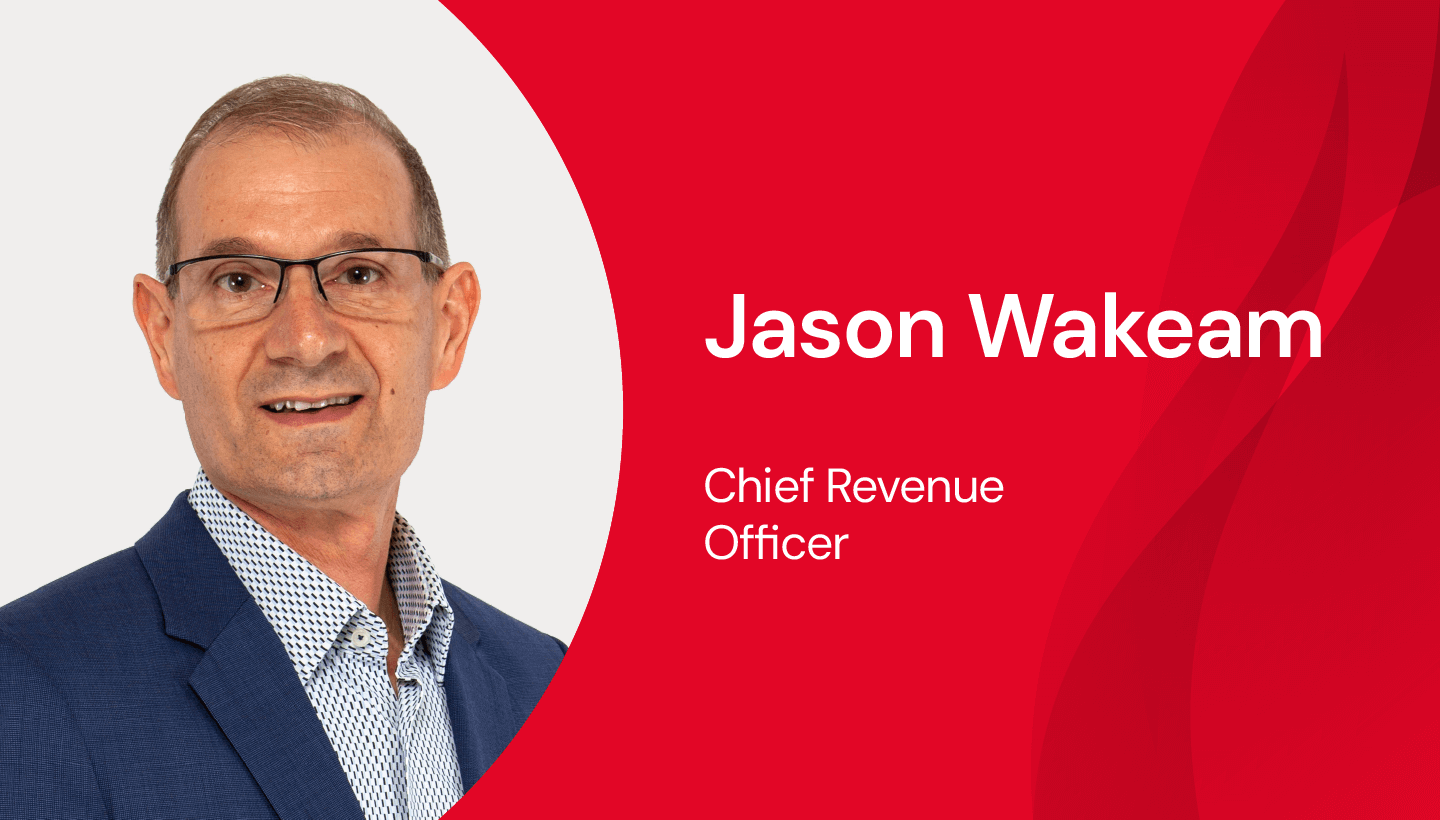
At the beginning of any given quarter, conference rooms fill with managers extolling the virtues of the key objectives and tactics for the next 90 days. I’ve always been amused by the little voice inside my head as I stand up in front of my team for these talks—in the best of times, it’s saying “C’mon… The probability that this goes exactly as planned is something like 2%.” But, you shrug it off because a good plan is one that creates a clear end point, proposes a viable way to get there, and has the agility to adapt when you come into contact with reality. 89 days later, you look back, chuckle a little at the twists and turns…and, hopefully, celebrate a mission accomplished.
That’s in the best of times. Today is nowhere near that. Today, it’s hard enough to know where the world will be in 90 days’ time, let alone where our business goals and initiatives will end up. To quote our CEO, Gleb, who was borrowing an idea from “Frozen 2,” the best thing is to focus on doing “the next right thing.”
So what, exactly, is that? Well, for Backblaze, it’s to remember that we’re Backblaze. Besides being the right thing, an advantage to being a transparent company is that it’s an easy thing to do even in uncertain times. Quite literally, it made a lot of sense to write a post that looks at the marketing and communications challenges for our business during a pandemic. Our hope is that in sharing what is happening behind the scenes, we might help those that are facing similar challenges.
Writing this post, I am very aware that some of our readers might be furloughed, laid off, or have their businesses entirely gone. I, and our team, hope that each day gets a little brighter and you get back to stable, soon. At the least, we hope you find something interesting or thought provoking here. At the most, we hope you’ll find inspiration to tackle whatever the next right thing is for you.
What Do We Know Right Now?
Fundamental demand is unaffected: The earliest data points we have for Backblaze’s business are that the top of funnel demand (web visits, account creates) have yet to be materially affected by the crisis. In March, those growth metrics hit the forecasts we created at the end of 2019.
These results are a bit head-scratching given the sheer dominance of pandemic news everywhere. Intuitively, one would assume data and cloud storage content wouldn’t be as interesting to people. And yet looking at the data, for now at least, the market for cloud storage is unchanged (more on that later).
Decision making by customers is affected: We can use our sales team’s pipeline to look a little deeper into customer behavior. What we’re seeing is that customers we were working on longer term projects with have largely paused or changed their decision-making approach.
Let’s say you’ve been planning some cool enhancement to your infrastructure since the beginning of the year and were just about to start executing. Well, migrating the archives off of those LTO tapes isn’t today’s problem (setting aside the fact that you may not even be allowed in your office to do that actual work). So those types of projects are delayed. “Change” or “enhance” takes a back seat to “stabilize.”
This does mean that new projects are springing up very quickly—all of a sudden you have a fully distributed workforce. Are your team members’ computers being backed up? How are they accessing mission critical data? While final decisions on existing projects have been delayed, new needs are being identified with accelerated timelines.
This is where a marketer’s post to other marketers feels particularly awkward. But Backblaze is a business: we have customers that rely on the services we provide, families that rely on the salaries we pay, and a broader community that enjoys our occasional gifs. In other words, we still have a responsibility to ensure the future success of the business. In a world where very little non-COVID related news seems to be relevant, what should our messaging look like?

What Can We Do?
There are three fundamental paths we could take with our outward messaging:
-
-
- 1. We could go dark. Trying to run a for-profit enterprise is odd during a pandemic. That said, infrastructure as a service is an increasingly relevant thing to
help
- with the problems our customers are dealing with.
-
-
- 2. We could just blissfully execute against our pre-existing plans. Our business model is fortunate to be resilient against these types of events. But ignoring the elephant in the room is odd at best and, at worst, offensively tone deaf.
-
-
- 3. We could attempt to be in conversation with the moment. Backblaze prides itself on being a transparent company. When other disasters have hit—
like the 2011 flooding in Thailand
- —we’ve had a unique perspective to share. Just like every company, we’re bordering on obsessive consumption of the news on the pandemic. Unlike a lot of companies, we have statisticians capable of running their own models. However, customers come to us for perspectives on data storage topics, not public health—what unique, value added perspective, if any, can we offer?
-
Option one feels irresponsible. Option two is troubling on a number of levels. Option three is why this post was written (and will be followed up with similar posts covering the challenges faced by our Supply Chain and People Operations teams).
Tactically, we feel that option three means that we adjust our plans, speak to the moment in whatever manner we’re uniquely able to, monitor the market for when storage news becomes interesting again, and try to remain a good corporate citizen along the way.

How We’ve Resolved to Do It:
Backblaze made the decision to move the majority of our workforce to work from home on March 6th (prior to California’s “shelter-in-place” orders). Over that weekend, as our business continuity plans kicked in, a number of proposals were floated. Two broad themes emerged in those discussions:
Should we notify our customers? Sending an email out felt like the right thing to do. But what were we notifying people of? Our operations and services weren’t changing from a customer perspective. We generally don’t send out emails that say, “Here’s 500 words on something that will not affect your experience with Backblaze.” Again, our approach was to speak when and where we could add value to our customers’ lives. An immediate note didn’t pass the sniff test.
Do we adjust our marketing plans? In the most literal sense, we wanted to tone down some celebratory messaging we knew was coming. We cleared an exabyte of customer data under management, but it felt prudent to cancel the party (particularly with guests coming in from around the globe). We had a 5,300 word profile in Inc. magazine (it’s a fun read)…but promoting that in the middle of everything else felt odd. But in the end, if we’re working on products and releases that we think will help our customers, we should still get them out to market.
As we worked through those big picture questions, we arrived at guiding principles for ourselves:
- We’re Still Running the Business: Our customers rely on us for their data storage. Every day, more people are looking for solutions and tools that can help them face their new reality. If we have a solution to a customer problem, let’s make sure the customer knows about it.
- Plan for an Eventual Recovery: Most would agree that we are already in a recession. And things are likely to get worse before they get better. That fact can make it hard to plan for the future. So this principle underlines two important realities: admit that there’s a disruption today; believe that things will eventually get better. We can’t know when things will get better. But, by assuming they will, we’ll do our part to create that sunnier tomorrow.
- This does mean that we should keep releasing our feature/functionality development. While our launches might be somewhat muted, if we have something that will help customers solve problems, let’s try to get it in their hands. (To that end, stay tuned for something big next month!)
- We Don’t Traffic in Fear, Uncertainty, or Doubt (FUD): There’s plenty of FUD to go around right now, and a lot of companies will try and take advantage of it. That’s never been our style, and we’re not going to start now. We will never be predatory, either in action or perception.
- Our Reality Isn’t Everyone’s Reality: Our business might be doing well, and much of our staff might be working from home, but that’s not the case for everyone. Our team may be relatively healthy, but many people and their families are fighting a deadly virus. Our communications need to include a statement or a sentiment that communicates, “This is a strange time. We’re staying safe and productive, and are trying to provide you tools/interesting stories.” Also, we need to review our automated messaging. As a backup company, the word “disaster” is often used in the context of “disaster recovery.” Those sentences could read poorly in today’s environment.
- We’re Still Backblaze: We’re known for providing unique insights and information on our blog that is gleaned from how we operate. We should continue to find ways to share knowledge that might help (or uniquely interest others) from our blog perspective.
- As part of this, remember that we’re a data storage company, not a health organization. There are many companies—like retailers, restaurants, medical providers—that need to communicate their relative status to the community and customers. Our customers trust that we are doing what’s right to keep their data safe and accessible. Always filter for “why does Backblaze have a value-add perspective?”

When Is the Beginning of Whatever Is Next?
As a business, it’s always important to stay in tune with how our markets and public are feeling. So how do we understand where society stands? With some hope and a lot of science, eventually, we think there will be a vaccine. But what are the steps before then? Will evidence that we’ve flattened the curve bring confidence that we’ve done the right thing and bring people back to more mundane topics?
At some point, we believe that there will be some leading indications that the recovery is starting from a psychological perspective. In that sense, we think that will be when customers will feel “stabilized” and begin thinking again about “changes” and “enhancements.” Here are three things we are monitoring.
- The curve gets flattened in major markets. We can measure the reduction in rates of infection and mortality in California and New York. Two large media markets, but in terms of coverage and where the majority of media lives. Also, two of the initial “hotspots” for COVID in the US. As those two states progress, we believe that the media environment will start covering other news (and that there will be increasing numbers of people receptive to non-COVID information). The sad realities of overlooking mid and small markets are not lost on us. This is just our perception of how public sentiment will go.
- Ability to care for those that are sick—as measured by having enough hospital beds for those that need it. As a society, we are facing many challenges in managing this outbreak. But, just like in wartime, the resilience and abilities of humans should never be underestimated. Factories are converting to produce more sanitizer, masks, and ventilators. The Army Corps of Engineers are converting spaces (auditoriums, arenas, etc.) into hospitals. We can track the projected number of beds needed and the capacity in given locales. When supply meets demand, it will be a good thing.
- Consumers are consuming more non-COVID stories—as measured in week over week podcast listening. The good people at Podtrac are providing statistics on podcast consumption during this time. It’s hard to imagine total consumption returning until people start commuting again, but it should begin to rise as consumer sentiment starts having interest in non-pandemic news.
When I became part of the Backblaze family four years ago, we were a third of the size we are today. The growth and expansion of the business is incredibly energizing, but does bring increased costs around keeping the team on the same page. Writing this post started as an internal memo to help organize our team. We thought it was potentially interesting enough to merit sharing with you. In keeping with our principles, we’ll continue to share our thinking as it evolves and whatever insights we believe might be helpful. We hope you and your family stay as safe and healthy as possible. As always, we’re happy to engage with you in the comments below.




